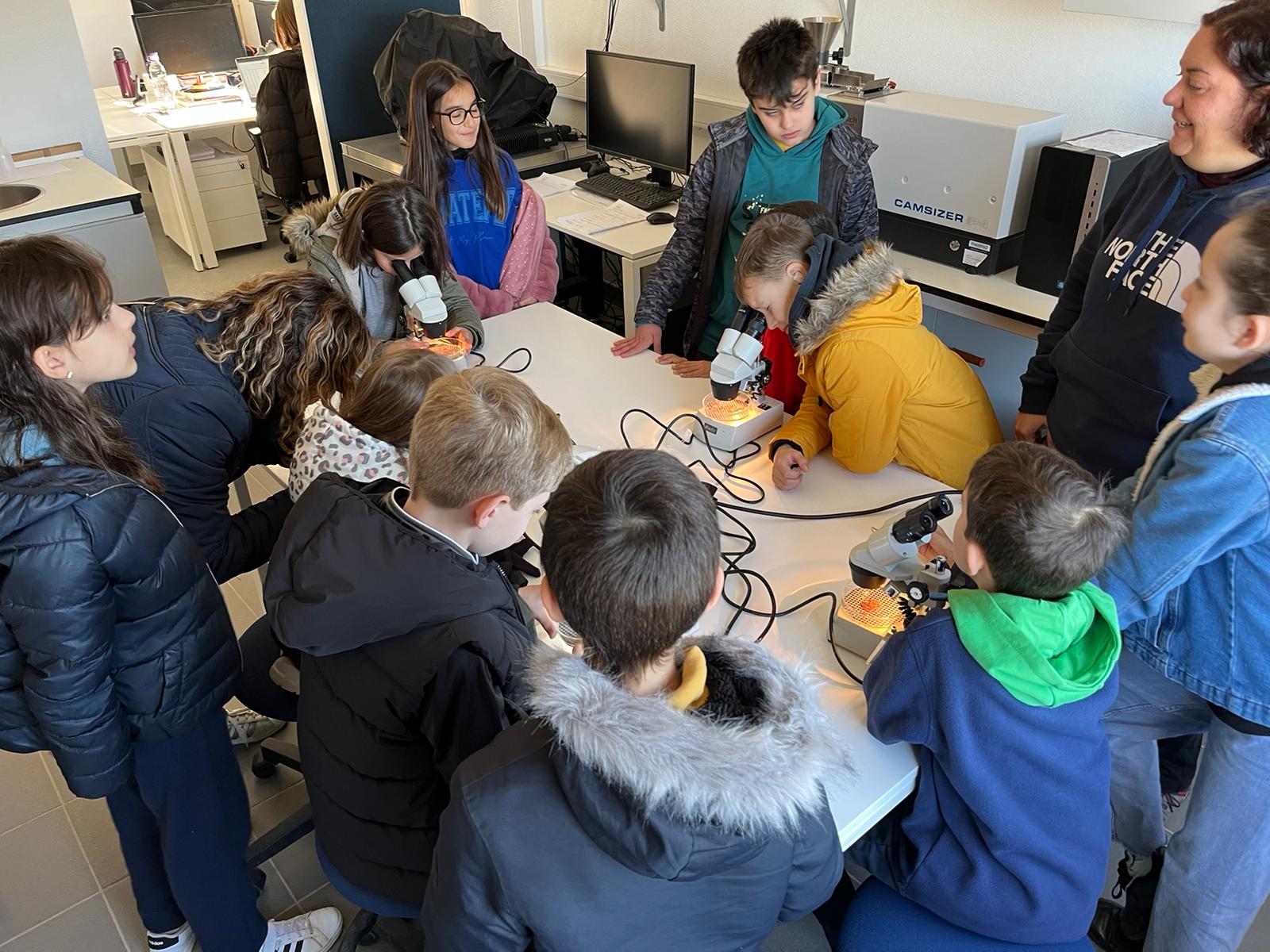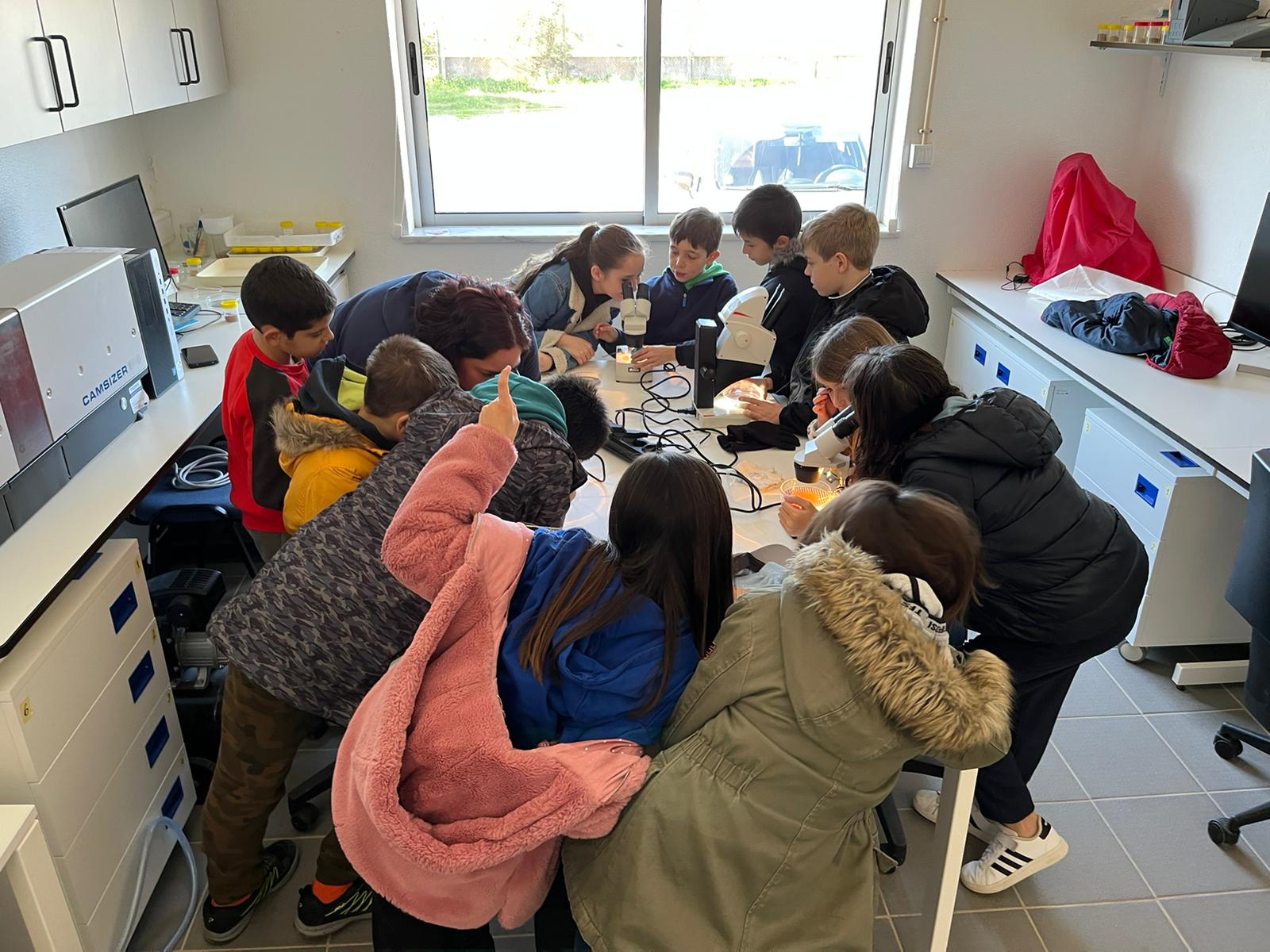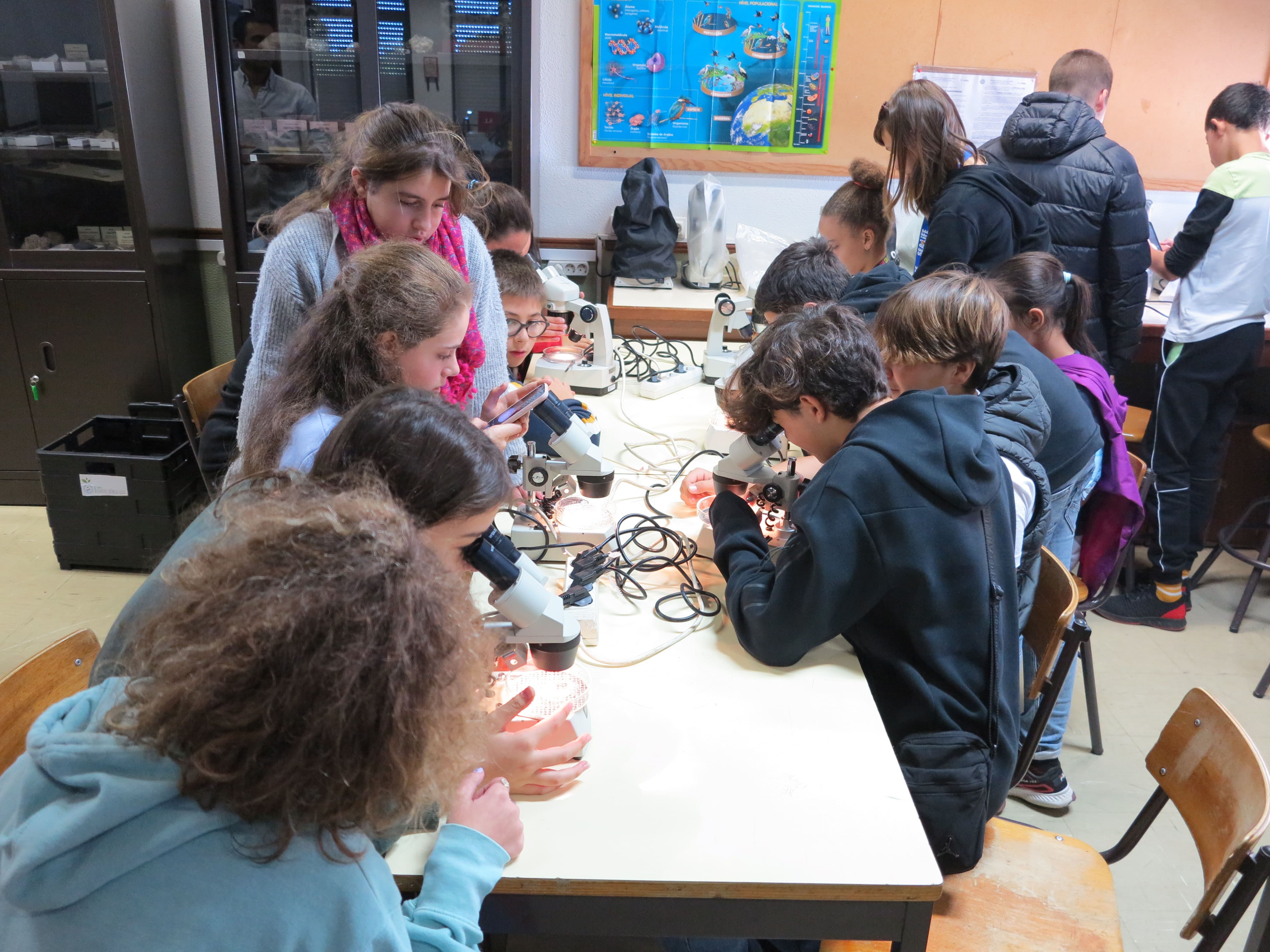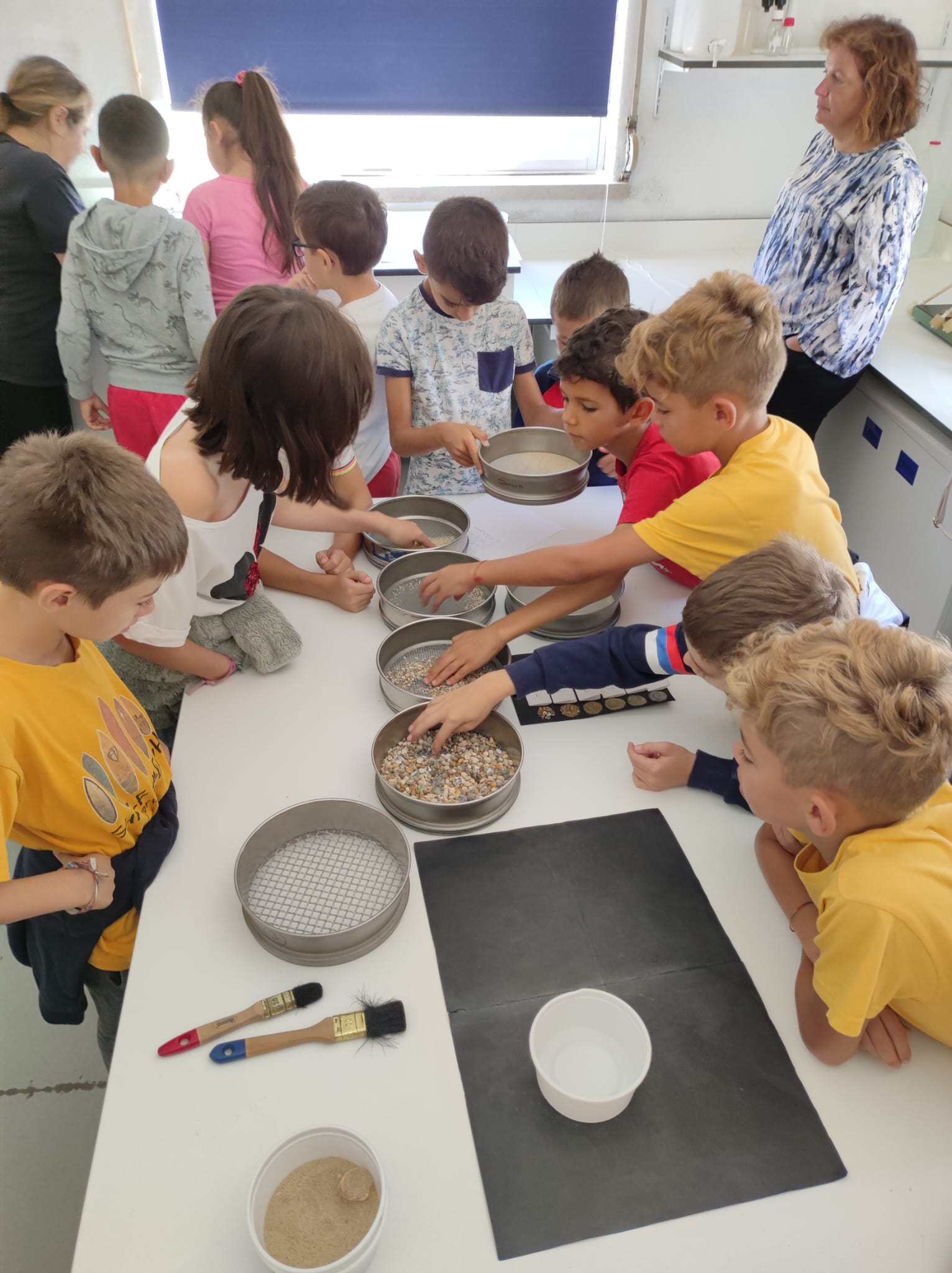In this activity, after a short theoretical introduction, the students of the 10th grade of the Secondary School Dr. Jorge Augusto Correia, compared the main water parameters – temperature, salinity and turbidity, in the water of the Ria (near the pier of the Hotel Vila Galé Albacora) and the sea water (this one previously collected), already in the IPMA Tavira Station.




After a short theoretical introduction, in the field, the 8th grade students from Escola E.b.2,3 Dom Paio Peres Correia collected small samples of muddy sediment and marsh plants. In the lab, they opened the sondages and characterized the sediment with respect to color, smell and grain size. They also identified the plants and made a small profile in which they discriminated the several salt marsh zones (low, medium, and high) based on the identification they had made.




On February 2nd we received the 4th grade students from E.B. Nº1 Horta do Carmo. In the scope of this activity, the students analyzed the mineralogical composition of several sands from different beaches around the world and their relation with the local/regional rocks. The sands were observed using a binocular magnifying glass.




On December 12th we received the 5th grade students from E.B. D. Manuel I (Agrupamento de Escolas D.Manuel I – Tavira). As part of the activity “Let’s get to know the marsh and its importance”, the students had the opportunity to identify different types of vegetation and characterize the marsh sediments through their physical properties (color, smell, granulometry). They also identified the plants and made a small profile in which they discriminated the various areas of the marsh (low, medium and high) based on the identification they had made.




As part of this activity, students analyzed the mineralogical composition of various sands from different beaches around the world and their relationship to local/regional rocks. The sands were observed using a binocular magnifying glass, and also using a cell phone application to capture images.




On October 13 and 14 we received 16 students of 11th grade Pinheiro e Rosa Secondary School (Faro). As part of the Week of Education and Environmental Volunteer Initiatives Water – SEIVA 2022. The activities were varied including a lecture by researcher Sebastião Teixeira (APA) on “The role of man in coastal erosion”, observation of sand from various parts of the world under a magnifying glass and sampling of microplastics on Tavira Island.




On October 12, we welcomed 19 8th grade students from Escola EB 2,3 D. Paio Peres Correia (Tavira). Within the scope of the activity “What is sand made of?” the students had the opportunity to look through a magnifying glass at sands from various beaches around the world and learn about their mineralogical composition.
On September 30th we welcomed 28 4th grade students from Santa Catarina Elementary School. As part of the activity “How big is sand” the students had the opportunity to learn about the various dimensions of sand and the mineralogical composition of sand.




On May 2, 4 and 5 we received 137 students from the 7th grade of EB 2,3 Dr. Joaquim Magalhães (Tomás Cabreira School Grouping). Under the activity “Let’s know the differences and similarities of beach, dune and marsh sediments” the students collected sediment samples in the various environments of the Ria Formosa near the IPMA station and processed them in the laboratory.




On April 22 we welcomed 22 4th grade students from EB1 Horta do Carmo. As part of the activity “The sands of the world on your cell phone” students had the opportunity to recognize differences between the sands of various beaches in the world, using the magnifying glass application on the cell phone to capture images.




On April 4, we received 26 8th grade students from E.B. D. Manuel I (Agrupamento de Escolas D.Manuel I – Tavira). As part of the activity “The sands of the world on your cell phone” the students had the opportunity to recognize differences between the sands of various beaches in the world, using the magnifying glass application on the cell phone to capture images.




On March 14, we received 17 students from the 8th grade of E.B. D. Manuel I (Agrupamento de Escolas D.Manuel I – Tavira). Within the scope of the activity “The sands of the world on your cell phone” the students had the opportunity to recognize differences between the sands of various beaches in the world, using the magnifying glass application on the cell phone to capture images.




On March 2nd and 3rd we received 91 students from the 9th grade of EB 2, 3 Dr. Joaquim Magalhães (Tomás Cabreira School Grouping, Faro). As part of the activity “Let’s discover the differences and similarities of beach, dune and marsh sediments” the students collected sediment samples in the various environments of the Ria Formosa near the IPMA Station and processed them in the laboratory.




